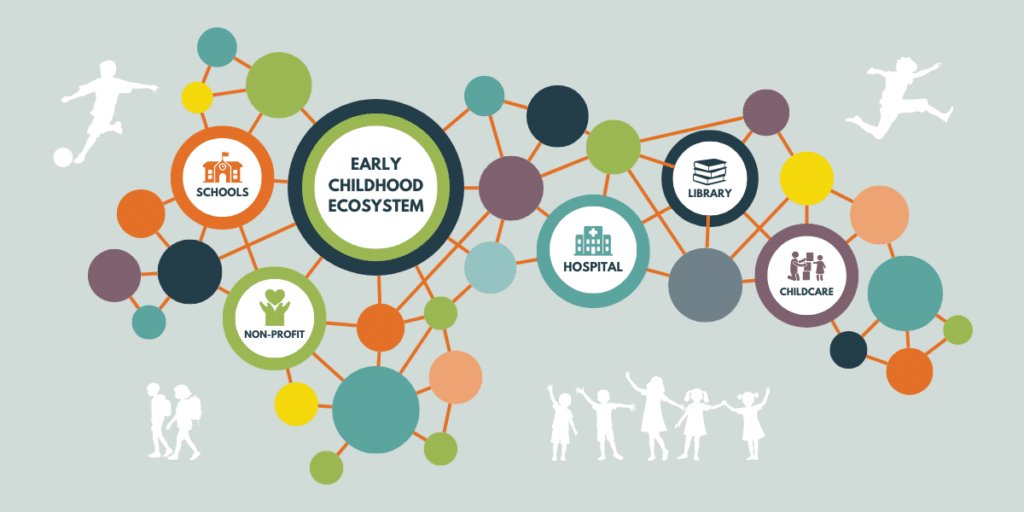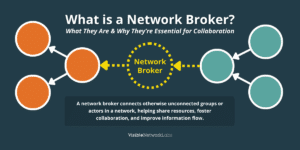Early childhood systems are essential for fostering the development, health, and well-being of young children. These systems often include a complex network of organizations, from childcare providers to health services and family support agencies. However, the intricate nature of these systems can lead to challenges in coordination, resource allocation, and identifying gaps in services.
Social Network Analysis (SNA) offers a transformative approach to understanding and improving these networks. By mapping relationships among stakeholders, SNA reveals hidden patterns, strengthens collaboration, and enhances service delivery. A compelling example of SNA’s power is the work done with Colorado’s Early Childhood Councils (ECCs) from 2013 to 2015, where SNA was used to build stronger systems and drive meaningful change.
Why Use SNA in Early Childhood Systems?
At its core, SNA is a method for visualizing and analyzing relationships. In the context of early childhood systems, it helps stakeholders understand:
- How organizations are connected.
- Where partnerships are strong or weak.
- Which areas need more collaboration or resources.
Instead of focusing on isolated efforts, SNA provides a bird’s-eye view of how systems operate as a whole, empowering stakeholders to foster more integrated and effective collaborations.

Get our monthly newsletter with resources for cross-sector collaboration, VNL recommended reading, and upcoming opportunities for engaged in the “network way of working.”
Benefits of SNA for Early Childhood Systems
Here are a few of the top reasons why our clients and partners value SNA insights to support and strengthen their partnerships across the early childhood ecosystem.
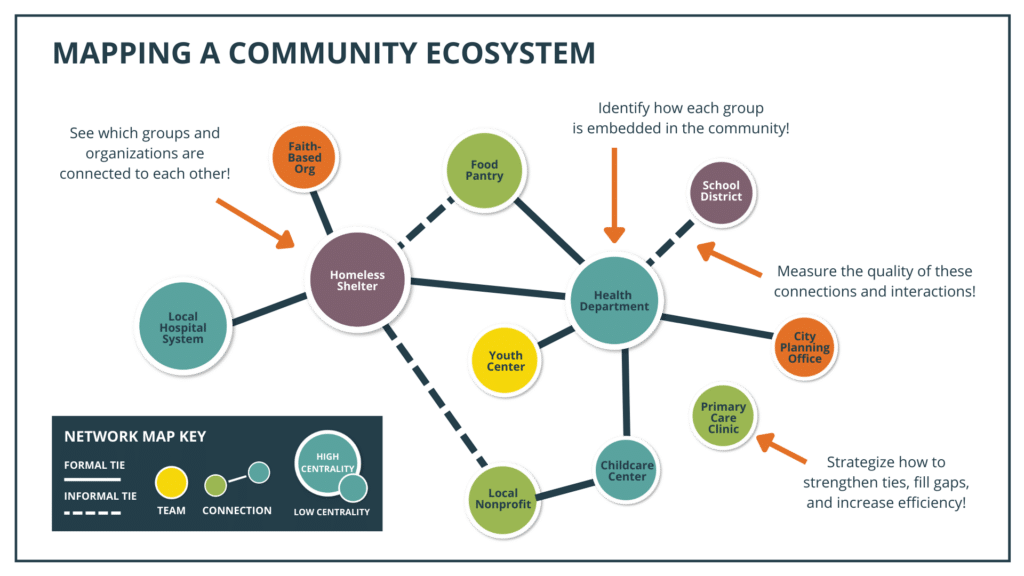
1. Revealing Hidden Connections
Early childhood systems often include diverse stakeholders, such as:
- Public health agencies.
- Educational institutions.
- Social service providers.
- Community advocacy groups.
SNA visually maps these interactions, making it easier to identify gaps and opportunities. For example, some organizations may be isolated or underutilized, while others might act as critical hubs of activity.
2. Strengthening Cross-Sector Collaboration
Collaboration is the foundation of an effective early childhood system. SNA helps by:
- Identifying areas where partnerships overlap, allowing for better coordination.
- Highlighting opportunities to connect organizations with complementary strengths.
This leads to streamlined efforts, reduced duplication, and more impactful services for children and families.
3. Assessing Network Health & Structure
SNA provides data on key metrics like:
- Density: How interconnected is the network overall?
- Centralization: Are relationships dominated by a few key players?
- Trust and Value: Do stakeholders perceive relationships as beneficial and reliable?
Understanding these factors ensures that the network remains resilient and equitable, with no single organization bearing undue responsibility.
4. Driving Strategic Decisions
Insights from SNA can guide decision-making, such as where to allocate resources or which relationships need strengthening. This strategic focus ensures that interventions have the greatest possible impact.
Colorado’s Early Childhood Councils:

A PARTNER CPRM System Mapping Case Study
From 2013 to 2015, the PARTNER Team worked with Colorado’s ECCs to conduct an SNA across 12 communities. Funded by the Colorado Department of Public Health and Environment, the Colorado Department of Human Services, and the Colorado Trust, the project aimed to evaluate relationships in early childhood systems, particularly in health integration and home visitation services.
Key Findings
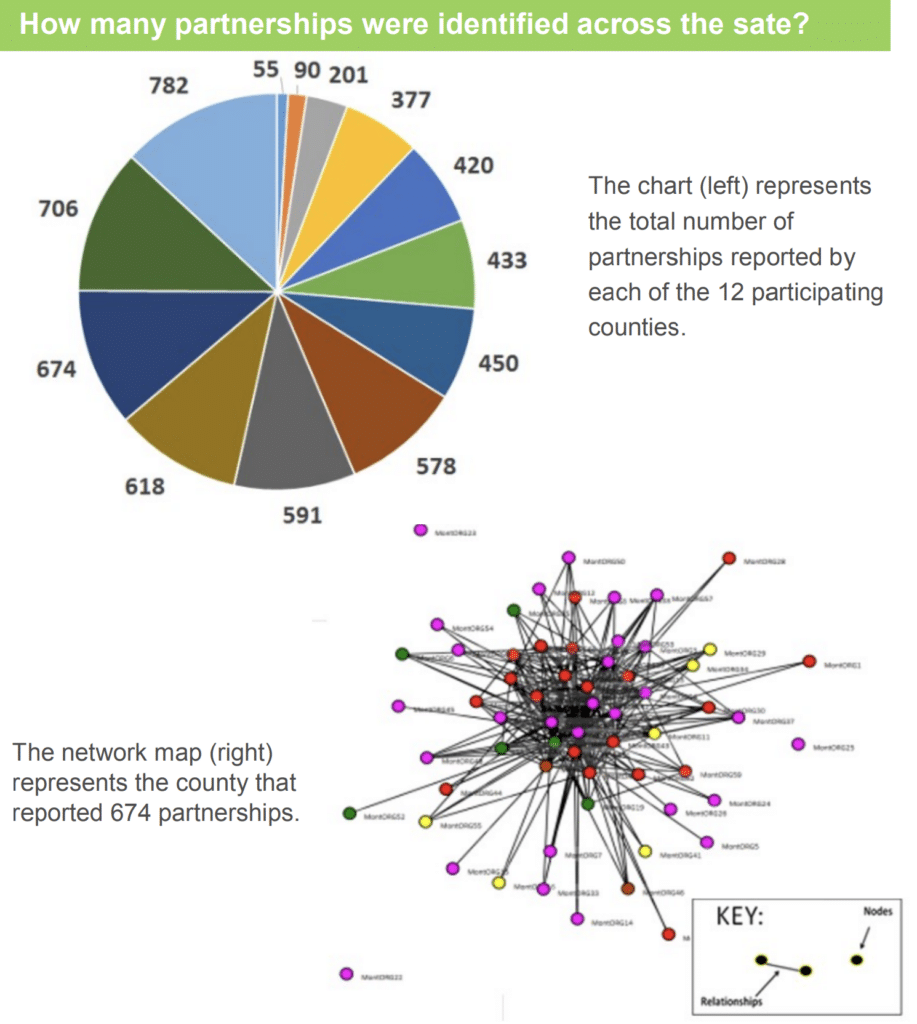
- ECCs were instrumental in system-building: Of the 5,975 partnerships identified statewide, 63% were directly attributed to ECC efforts. This included 2,615 new partnerships and 1,159 strengthened relationships.
- ECCs served as vital connectors: In all but two counties, ECCs were responsible for over 50% of partnerships, playing a key role in linking diverse sectors and organizations.
- Trust and value were high: ECCs were seen as trusted and valuable partners, enabling stronger collaboration and better service integration.
How the Findings Were Used
The data collected from this SNA informed numerous actionable steps, including:
- Targeted Improvements: La Plata County ECC used trust-related data to align partner goals, fostering better collaboration across agencies.
- Resource Allocation: Mesa County integrated findings into annual reports and used the insights to strengthen grant applications.
- Capacity Building: ECCs used the results to enhance their facilitation skills, ensuring more meaningful and effective partnerships moving forward.
Real-World Impact
The SNA findings didn’t just provide a snapshot of the network—they drove real change. For example, ECCs used the data to improve referral processes, share resources more effectively, and develop new programs tailored to community needs.
As one ECC coordinator stated, “the results of the PARTNER platform will be used to inform community partner outreach and increase participation from current and new partners in our ecosystem.”
How to Apply SNA in Early Childhood Systems
Implementing Social Network Analysis (SNA) in early childhood systems can seem complex, but by breaking it into clear, actionable steps, it becomes a manageable and rewarding process. Here’s a detailed guide to help you get started:
1. Define the Scope and Boundaries
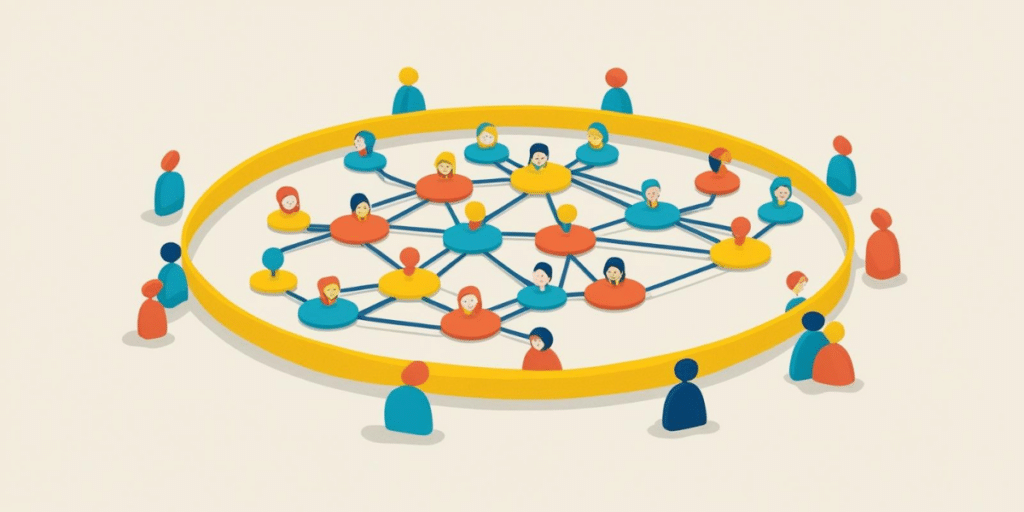
Start by identifying the boundaries of your network. Consider:
- Which organizations should be included? For early childhood systems, this may include schools, healthcare providers, social services, advocacy groups, and community centers.
- What relationships are you analyzing? Decide if you’re examining referrals, resource sharing, collaboration on projects, or another type of interaction.
- What are your goals? Be clear on the purpose of the analysis. Are you trying to identify gaps in service delivery, assess trust and value, or understand collaboration dynamics?
By defining these parameters, you ensure that your SNA captures the most relevant and meaningful data.
2. Capture Relationship Data
The quality of your SNA depends on the data you collect. Here’s how to approach this step:
- Design a Survey or Interview Framework: Create questions that capture both quantitative and qualitative information. For example:
- Frequency of interaction: “How often do you collaborate with this organization?”
- Trust and value: “How much do you trust this partner to fulfill their commitments?”
- Relationship type: “What resources or services do you exchange with this partner?”
- Engage Key Stakeholders: Distribute surveys or conduct interviews with representatives from all relevant organizations. Use tools like the PARTNER CPRM platform to automate data collection and ensure consistency.
- Ensure Participation: Communicate the purpose and benefits of the SNA to encourage responses. Provide support for participants who may need clarification about the survey or process.
3. Create Network Maps
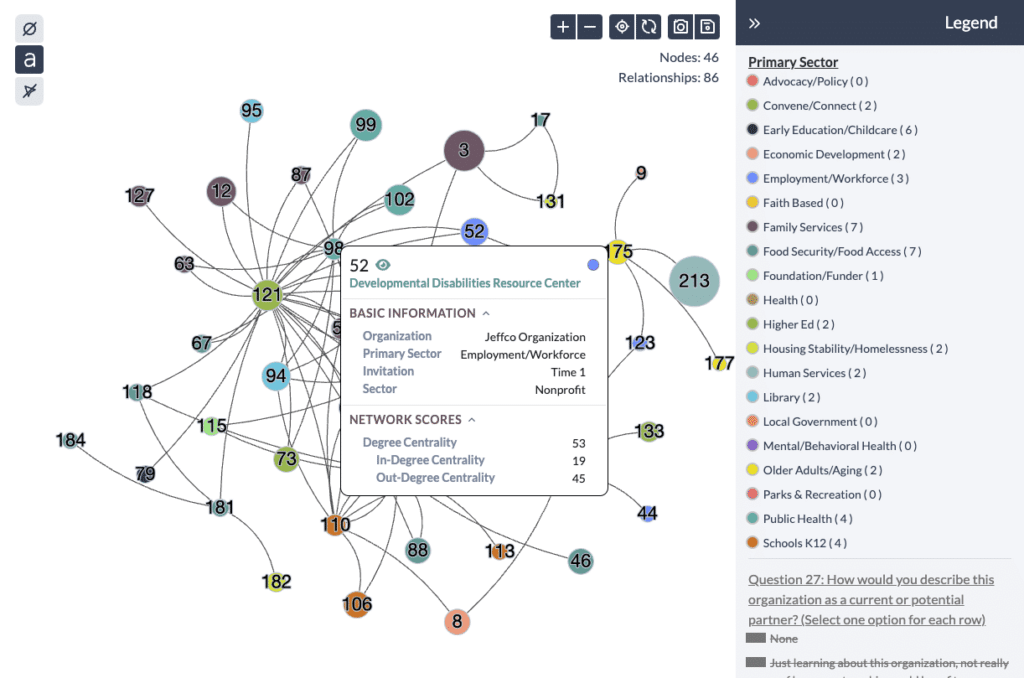
Transform your data into a visual representation of your network. Tools like PARTNER CPRM make this process straightforward by generating maps that illustrate:
- Nodes: Representing individual organizations or stakeholders.
- Edges: Showing the relationships between nodes, with variations in line thickness or color to represent frequency, trust, or other attributes.
- Clusters or Sub-Networks: Highlighting groups of highly interconnected stakeholders or specific sectors, like healthcare or early education.
These maps provide a clear, intuitive view of the network’s structure, allowing stakeholders to identify key players, gaps, and redundancies at a glance.
4. Analyze and Interpret Results
Once your network maps are created, delve deeper into the data. Focus on:
- Patterns of Connectivity: Are some organizations isolated? Who are the most central players?
- Strengths and Weaknesses: Identify areas with strong collaboration and areas where partnerships are lacking.
- Key Metrics:
- Density: Is the network well-connected, or are there silos?
- Centrality: Who are the most influential or well-connected stakeholders?
- Trust and Value: Which relationships are most trusted and perceived as valuable?
Use this analysis to understand the network’s current state and areas for improvement.
5. Act on Insights

The true value of SNA lies in translating insights into action. Use your findings to:
- Develop Targeted Strategies:
- Strengthen weak or underutilized connections by facilitating introductions or joint projects.
- Support isolated stakeholders by integrating them into existing collaborations.
- Allocate Resources Effectively: Focus on areas with the highest need or potential for impact, such as underserved regions or underrepresented sectors.
- Engage Stakeholders: Share the network maps and findings in workshops or meetings. Encourage participants to co-create solutions based on the data.
- Monitor Progress: Repeat the analysis periodically to track changes, measure the impact of interventions, and ensure the network evolves to meet community needs.
Additional Tips for Success
- Build Capacity: Train stakeholders in understanding and using SNA data so they can take ownership of the process.
- Leverage Technology: Use tools like the PARTNER CPRM platform for efficient data collection, mapping, and analysis.
- Communicate Findings Effectively: Tailor reports and visualizations to your audience, whether they are policymakers, funders, or community partners.
By following these steps, you can use SNA to not only map but also strengthen early childhood systems, ensuring that every organization and stakeholder contributes to creating better outcomes for children and families.
Conclusion

Social Network Analysis is more than just a tool for mapping relationships—it’s a strategic approach to building stronger, more effective systems. The Colorado ECC project exemplifies how SNA can uncover hidden dynamics, drive collaboration, and improve outcomes for children and families.
Whether you’re a policymaker, practitioner, or advocate, SNA offers invaluable insights to guide your work and amplify your impact. By leveraging the power of connections, we can create more cohesive systems that truly meet the needs of our youngest and most vulnerable community members.
Ready to harness the power of SNA? Request a demo with a network science specialist to learn how the PARTNER CPRM platform can help you map and strengthen your early childhood network!
